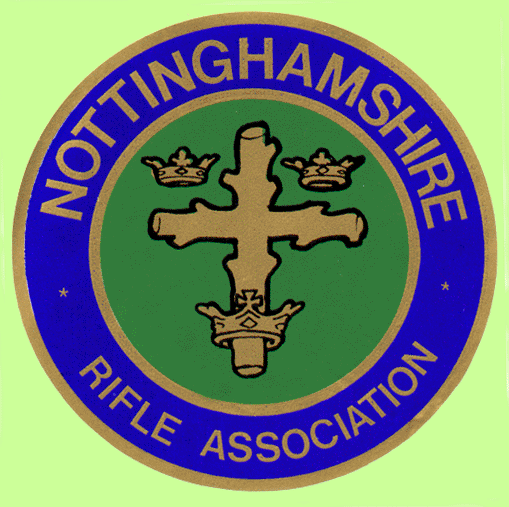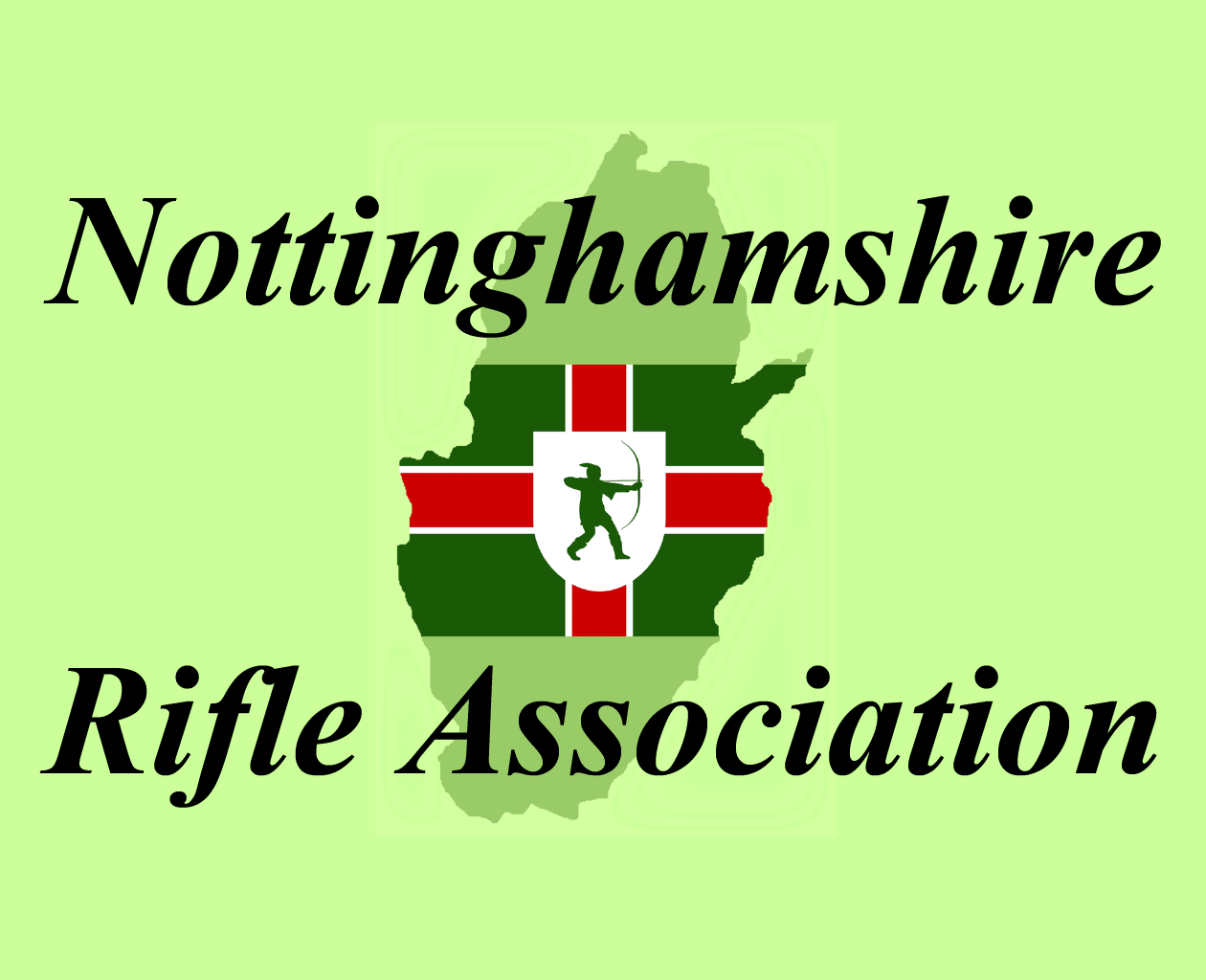The New Range at Trent in Words and Sketches
Two days after the opening ceremony on the Thursday, an account of the day's proceedings appeared in the Nottinghamshire Guardian of Saturday, November 9th. The account went into the events leading up to the opening of the new range at Trent giving a summary of the Robin Hood's efforts to locate a venue to replace the Coppice Road range which had been closed in 1890 and of the Nottingham Corporation debates on the matter. The account includes details of the cost of the range, its construction and the up-to-date features incorporated into its design.
There follows details of the events and ceremonies which accompanied the visit by the new Commander-in-Chief of the army, Lord Wolseley, to Nottingham and then on to Trent to open the range, returning to Nottingham for a luncheon at the Exchange Hall
Alongside the report the Guardian carried sketches of the old and new ranges, which give some indication of the far grander scale of the Trent range than the old Coppice road range.
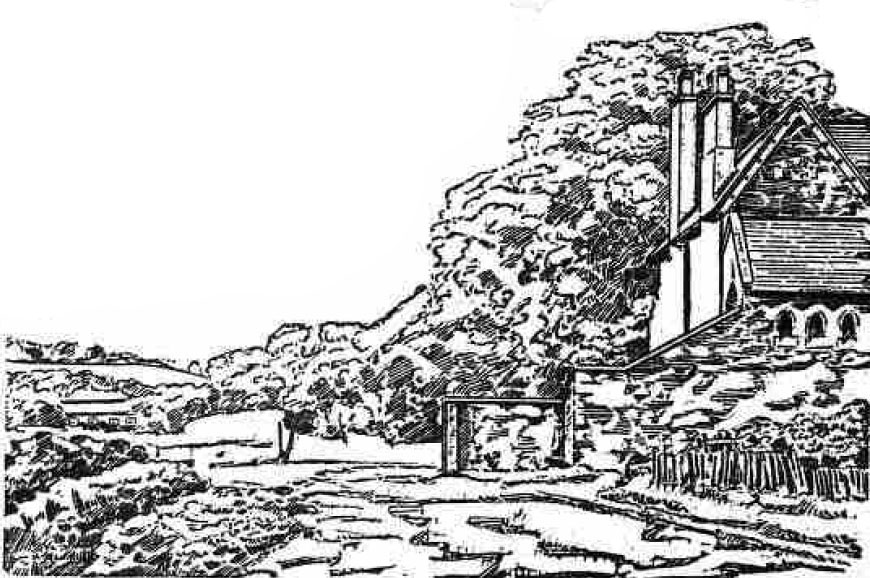
The first sketch above shows the scene from behind the 500 yard firing point at Coppice Road range with the lodge and the entrance to the range from Coppice Road on the right. Four of the five targets can just be made out on the left of the sketch just above the foreground bushes.
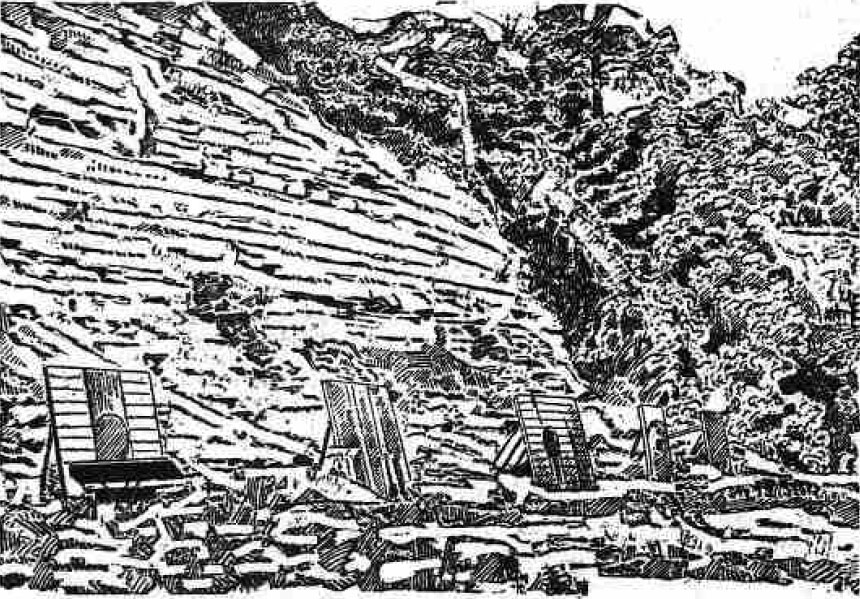
This next sketch is of the targets and butts on the Coppice Road range. There appear to be five fixed target frames and no provision by way of shelter for any markers
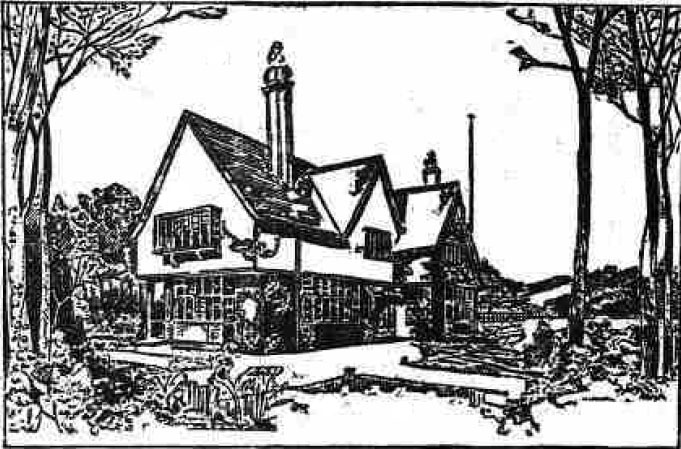
The new lodge at the entrance to the Trent Range looks and by the account in the Guardian is far more substantial than the Coppice Road lodge, having accommodation for a Sergeant-Instructor, meeting rooms for officers and other ranks, and provision for supplying refreshments from the downstairs kitchen area.
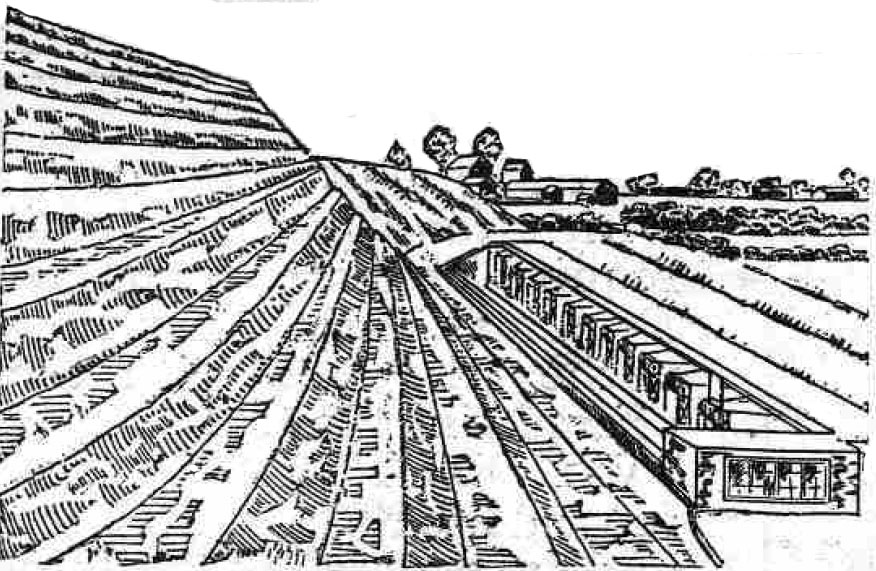
This final sketch shows the butts at Trent in front of the earth embankment protecting the Cranfleet Cut, which carried barge traffic from the Trent around the weir on the river. The embankment is extended on both ends by slightly lower earthworks, one of which can be seen at the further end of the embankment. There are 12 targets mounted on the Jeffries patent target apparatus, which is still a familiar sight on present day ranges.
Since compiling the above reports we have come across two photographs which are remarkably similar to the sketches of the old Coppice Road range
The photographs appeared in Volume 15 of Victorian Nottingham by Richard Iliffe and Wilfred Bagguley, published by The Nottingham Historical Film Unit of 96 Hucknall Road, Carrington, Nottingham and printed by Derry and Sons Ltd also of Nottingham in 1975. The publication was one of a series of at least 19 volumes covering many aspects of Nottingham life in pictures and stories, now all out of print.
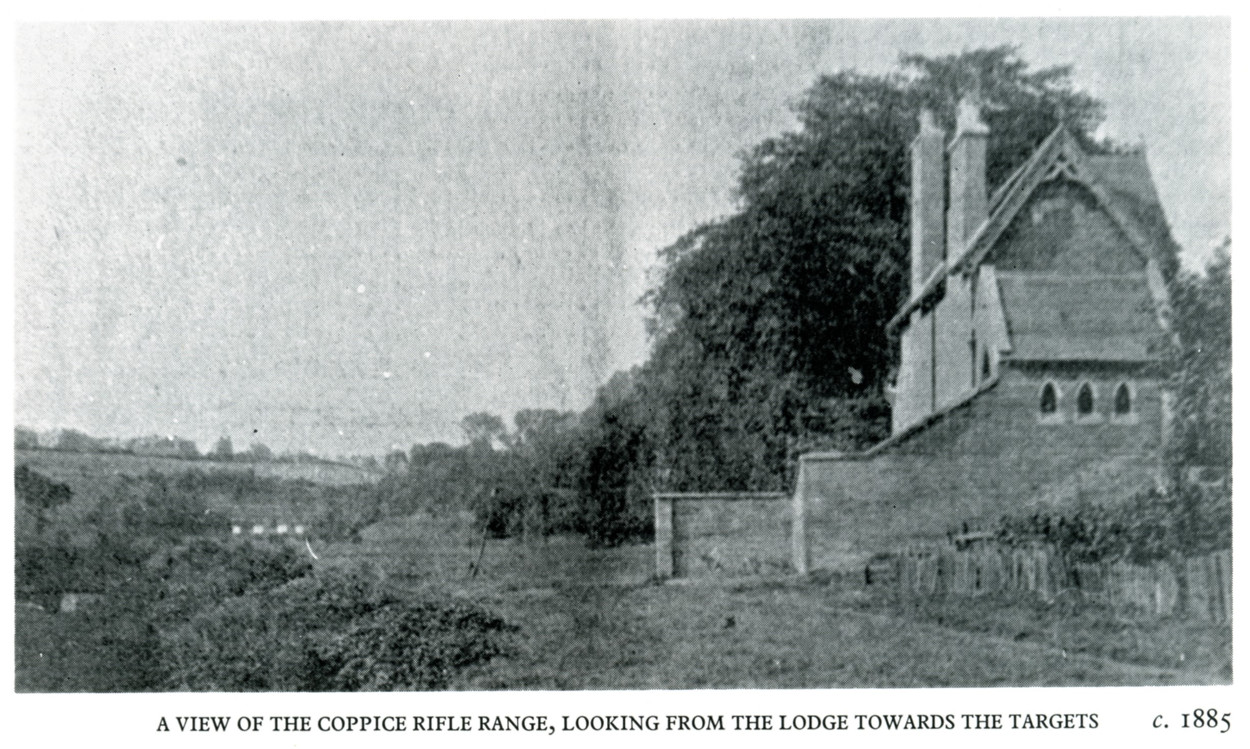
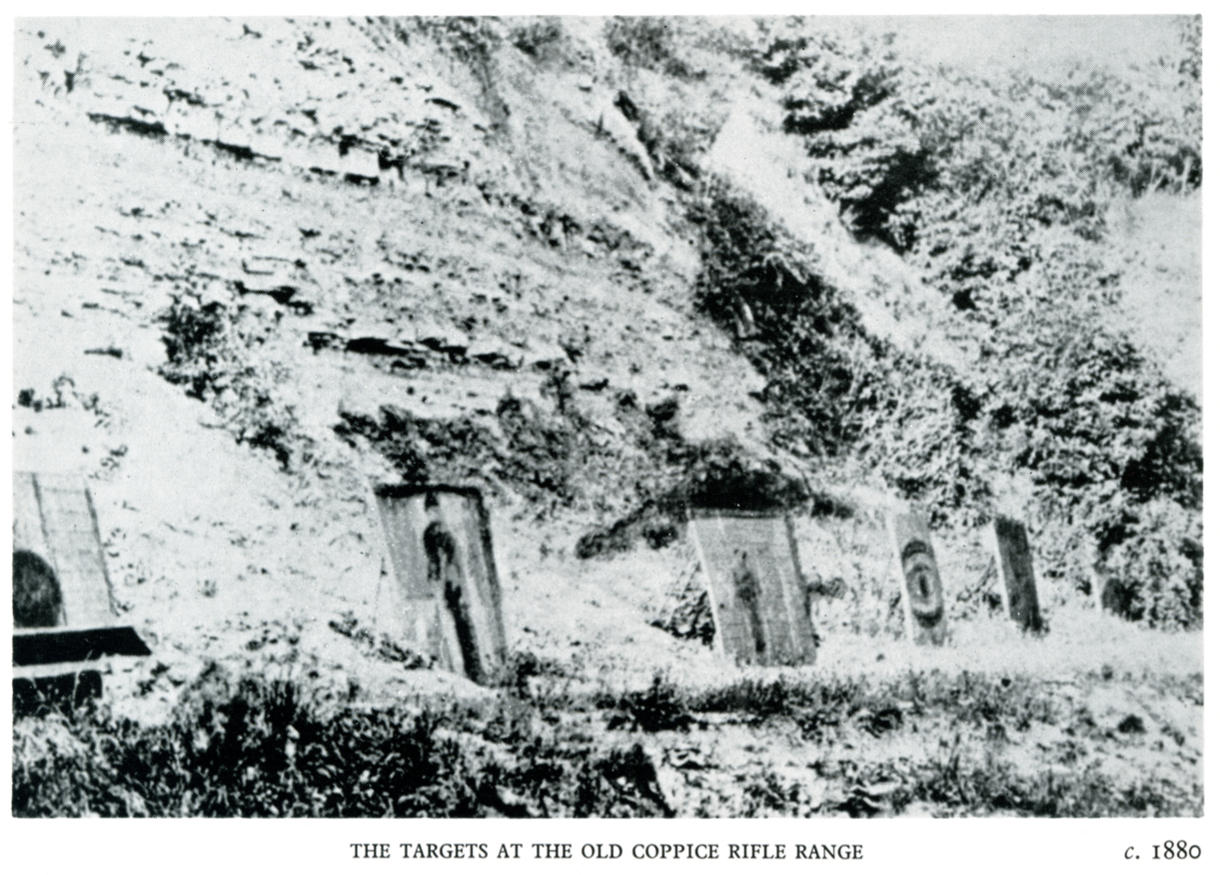
The source of the pictures is not cited in the publication and are posted here in good faith as part of the historical record. We apologise if we have unwittingly infringed anyone's copyright.
In the history of the Robin Hood Rifles no more striking event has been witnessed than that which took place on Thursday when the new range provided for the use of the battalion at Trent was opened by Lord Wolseley and the first shots fired. Under any circumstances the visit of the Commander-in-Chief of the British army would have been attended with interest, but there were features which invested Thursday's function with special significance. It was the first occasion since his appointment in succession to the Duke of Cambridge that Lord Wolseley had taken part officially in any public ceremony, and it was not inappropriate that the matter should be one relating to the citizen army. Nor was this the only fact suggestive of importance. The opening of the Trent Range marks a distinct epoch in regard to the work of the volunteers. It witnesses the satisfactory completion of an undertaking in which the municipal authorities, in fitting consonance with the local spirit which prompted the formation and maintenance of rifle companies in the old days, have come to the help of a battalion which possesses a notable record, both on the score of its capacity in the matter of drill, and for the signal ability of many of its members as marksmen. When, through the danger inseparable from surrounding conditions, the old Coppice range had to be compulsorily closed, a formidable difficulty presented itself to those responsible for the arrangements in connection with the regiment.
From the early sixties until 1890 the old "practice ground", to use the term by which it was first known served its purpose tolerably well. It was, however, by no means a model range. There was an absence of the conditions as to openness and other elements indispensable to those whose ambition was something higher than the mere performance of class shooting. When engaged in national competitions at Wimbledon or Bisley the representatives of the Robin Hoods found themselves pitted against hundreds who came from districts where, by reason of the varying and more exacting conditions, there was the greater opportunity for proficiency in the work. It is, however, an eloquent testimony to the ability of the Nottingham marksmen to recall the fact that notwithstanding the disadvantages, they gained no small proportion of the available honours. Quite an interesting chapter might be written about the old Coppice range. There are those today in the battalion who seem as keen enthusiasts in the use of the rifle as when they fired their first shots more than 20 years ago. The ardour of rifle shooting is almost akin to that which is evinced by the devotee of field sports. The battalion records of the Robin Hoods present an instructive list of competitions carried out under conditions which, in many cases, were not a little exacting. But it is not with the winning of challenge cups or medals that a volunteer organisation has in the main to deal. Government regulations render the earning of the capitation grant dependent upon the completion of the registering upon the part of all concerned. Thus the closing of the Coppice ground meant no light matter to those in authority in the battalion.
For a time ranges at Derby, Grantham, Melton, and elsewhere were laid under contribution, but it was obviously impossible that these expedients for meeting a serious difficulty could be long maintained, and necessarily the question arose where a convenient site was to be found, and that which was still more important, how the money was to be raised. With the attempts made to obtain direct Government aid those interested in the matter locally are conversant. The official reply from the Secretary of State for War, which was forwarded early in 1894, made it clear that there was no hope for any assistance from public funds, or of an ability to recommend a grant in aid.
Recognising the powers conferred on municipal authorities by the Military Lands Act of 1892, the commissioned officers of the Robin Hoods and others presented a petition to the Town Council about two years since asking them for help. They suggested that land at Trent should be acquired for the purpose of the new range. All the available sites had been previously inspected and their possibilities discussed by those who, from technical knowledge of the matter, were competent to express an opinion. Apart from the financial question involved, the difficulties of obtaining land to meet the stringent requirements of the military authorities had, to employ the language of the petition, been "enormous", the great carrying power of the modern rifle rendering it necessary that there should be a back ground of nearly two miles free from cross roads and houses. The Trent site commended itself among other things from the fact of the existence of a hill of considerable height situated at about 500 yards in rear of the targets. Moreover, the locale, after official inspection, had been approved by the District Inspector of Musketry of the northern division at York. The proximity of the site to Nottingham, and the exceptional facilities in the matter of train service were other obvious elements in the consideration.
Consequent upon the closing of the old range the regiment had been placed in the awkward position of being unable to get the whole of its members to complete the annual musketry training. The intimation to the colonel commandant was unequivocal in its terms. The authorities declared that no allowance could be made in future on account of deficiencies in class firing. Little short of the actual disbanding of the regiment was inevitable. There were members of the Corporation who, although not lacking in sympathy with the spirit of the petition, urged that it was essentially a matter for Government assistance, but the ruling of the Secretary of State for War admitted no doubt, and the special committee of the Corporation appointed to deal with the subject emphasised the critical character of the situation in the succinct statement that it was impossible for the Battalion to continue unless a range could be secured for practice. The judgement of the officers as to the practicability of the Trent site was endorsed by the committee, who estimated that the necessary land might be acquired, and a range formed, for the sum of £16,000, including compensation for severance and injury to other lands. Allowing for interest on the loan at the rate of three per cent, and the necessary amount to be set aside for the sinking fund for redemption of the debt, calculated upon a three per cent table, it was computed that the annual charge involved would be £502. But from this there was to be deducted a rent to the extent of £250 to be paid yearly by the Robin Hoods, plus £50, for which it was suggested that the surplus lands might be let, the net annual expenditure thus incurred being £302. Practically, therefore, the (public) would be saddled with a charge on the rates of less than one-tenth of a penny in the pound. The committee's recommendation was adopted, and whatever may have been the difference of opinion upon the part of some of the municipal representatives when the matter first came up for discussion, there can be little doubt as to the wisdom of the course which has been adopted.
That the money has been judiciously expended was evident to those who had an opportunity of inspecting the site for the first time on Thursday. Under the direction of Messrs. Brewill and Bailey, architects, of Nottingham, the ground has been admirably planned, and the contract carried out by Messrs. Dennett and Williamson, of the Castle works. It was no small advantage to the Battalion to have the professional aid of Major Brewill, whose position as the instructor of musketry rendered him eminently fitted for the task. Operations were commenced in May last, and the work, involving many heavy details, has been expeditiously carried out. In all 74 acres 1r. 14p. of land were acquired by the Corporation from Messrs. Maden and J.C. Hopkins, but the Robin Hoods will not occupy more than 36 acres of that area, it being intended to let the remainder for farming purposes.
From the sub-way, which permits of the exit from Trent Station, the entrance to the range is about 20 yards distant. There is a possibility for shooting purposes of nearly 900 yards, the direction being from a point contiguous to the Midland Railway to Cranfleet Cut, a stream of water which, leaving the Trent upon the Derbyshire side of the line from Trent to Leicester, joins the same river at a distance of about half a mile below the weir. The targets are situated on the north or station side of the cut. Originally the site consisted of ordinary meadow land intersected by dykes and hedges, the former of which are now filled in. While the surface, naturally enough, is not level, there are no mounds which would at all interrupt a clear view of the targets from any part of the land, from whatever mounds the marksman may choose to shoot. In the arrangement of the targets the facilities for recording scores and the provision of the necessary firing beds, the latest ideas have been adopted. The raised firing beds are formed of washed gravel, and there is ample room for 12 men to fire from each shelter, or 36 in all, at one time. Telephonic communication is established between the shelters and the targets, and the men will be compelled to proceed to each along a railed-in footpath at the side of the range. In a straight line from the target pegs are sunk into the ground denoting every 100 yards distance, so that in match shooting all the twelve targets which have been affixed can be in use for each range. As a general rule the shelters will be used in exceptional circumstances only, and match shooting will proceed in the open as indicated by the pegs. The sinking of the mantlets in which the targets are fixed occasioned no little difficulty, owing to the river level, and in the course of excavation pumping was frequently found to be necessary. A long trench has been constructed of cement concrete, and it is in this that the targets, 12 in number, as already stated, are situated. Should these ever be flooded a horse pump is at hand, by which the trench can be rapidly emptied, and in the case of heavy rains a small hand pump will answer all requirements. The targets, known as the "Jeffries" patent, such as are now in general use on all Government ranges, are all of canvas, and the system of marking will be that which is adopted at Bisley. About three feet of the sunk mantlets are above ground, and they are protected by an earthwork, averaging six or seven feet deep, with 15 to 18 inches of blue brickwork in cement at the back.
The principal work in the construction of the range has been the throwing up of a large embankment in rear of the target, to cover the traffic upon Cranfleet Cut and its towing path. This butt is 300 feet long and 30 feet high, with a depth at the base of 95 feet, and contains 30,000 cubic yards or 45,000 tons of earth. It has been found necessary that it should be escarped so as to give a surface of a greater angle than 45 degrees, and thus to decrease the danger of ricochets. It also possesses two wings, each being about 165 feet long and 20 feet high, and having a base of 60 feet. The work on this embankment was proceeded with day and night during some weeks, in order to facilitate its completion. The earth has been excavated from an adjoining field, and in all probability a large lake will be formed here. The portion of the Thrumpton estate in rear of the targets, over which an easement in perpetuity has been acquired, is carefully marked with notice boards, warning foot passengers that it is dangerous to pass whilst a red flag is hoisted on the range. Although the purchase of this easement was a necessity, it will be an extremely rare occurrence for a bullet to pass over the embankment. Another flag will be hoisted on the top of Thrumpton hills, upon a flagstaff 85ft. in height, with the ostensible object of indicating to the marksmen the direction in which the wind is blowing. Signal posts are placed on the towing-path at a distance of 200 yards from each side of the embankments, in order that bargemen in charge of horses may, by their means, if there be any need, notify those on the range to cease firing.
At the entrance to the range stands a residence for one of the Sergt.-Instructors. Upon the ground floor, in addition to the apartments, which will be occupied by him, are a room for the officers, and a rifle store for the non-commissioned officers and men, with offices attached to each. Both these rooms are entered from either a side door or from a verandah overlooking the targets. Above them on the first floor is a committee-room, in which refreshments can be supplied. It is proposed to retail tea and non- alcoholic drinks to the men who attend the firing, and a hoist is provided connecting the back kitchen of the house with this room for that purpose. Attached to the building is a magazine for the storage of ball ammunition, which is fitted with fireproof ceiling and flooring. In front of the house a lawn has been arranged, in the centre of which is a flag- staff, with a seat around it. A garden is being planted in the rear.
The next buildings are the shelters for the 200, 500 and 600 yards ranges, all of which are similar in construction, and are situated at different angles from the targets, to admit of simultaneous firing from all three were it desired, though it is not intended to utilise them to such an extent. At each shelter is a covered shed, with a zinc roof, having accommodation for the men, and gun racks, should inclement weather render shelter necessary. A sergeant-instructor's cabin is supplied at each shelter, from which it is possible for him to control the firing, and to keep the registers free from wet.
It was with lively satisfaction that the news was received in Nottingham of the readiness of Lord Wolseley to accept the invitation that he should attend for the purpose of formally opening the range. Naturally, after recent developments in regard to the control of the British military services, the visit was invested with something more than local interest. The reception accorded to Lord Wolseley was, it goes almost without saying, of the heartiest possible character. In consultation with the responsible officers of the Robin Hoods, admirable arrangements had been made by the civic authorities. The Commander-in-Chief, accompanied by his aide-de-camp, Colonel Turner, travelled from London by a train leaving St. Pancras at 9 a.m. There was an informal reception upon his arrival at Nottingham, the Mayor and the Town Clerk greeting the distinguished visitor. In a special train, to which the saloon in which Lord Wolseley had journeyed was attached, members of the Corporation and other invited guests, including the Bishop of Southwell, travelled to Trent. There was a large crowd upon the Nottingham platform, and considerable enthusiasm was manifested. It was far from being a pleasant day, in the meteorological sense, for the purpose of an outdoor function. Early in the morning there were dull clouds portentous of rain, and soon after eleven a dismal drizzle set in. Fortunately there was no heavy downpour, but the conditions were discomforting. The Robin Hoods had paraded at a quarter to ten in Parkinson-street, and proceeded by a special train to Trent. Upon Lord Wolseley's arrival at the junction shortly before twelve he was welcomed by the Mayor, by whom he was conducted to the lodge at the entrance to the range. The battalion, which had been drawn up in line, received the Commander-in-Chief with a general salute. Afterwards Lord Wolseley inspected the regiment. Subsequently three side of a square were formed, and the Mayor delivered a brief address, recalling the circumstances connected with the establishment of the range, which Lord Wolseley declared open. The first shot was fired by Mrs. Bright, the Mayoress, and the second by Mrs. Cantrell-Hubbersty, the wife of the colonel commanding the regiment, a Maxim gun, which had been specially sent down and fired by the representative of the Maxim Company being used. After other interesting episodes, Lord Wolseley, accompanied by the Mayor and Corporation, the officers of the Robin Hoods, and others, returned to Nottingham. From the Midland Station the Commander-in-Chief, and other members of the party were conveyed in carriages to the Exchange Hall, an escort being furnished by the South Notts. Hussars. The procession through the streets, which was headed by the band of the Robin Hoods, was watched by thousands of people. Upon reaching the Exchange Lord Wolseley was conducted into the Mayor's parlour, and afterwards to the Council Chamber, where the Mayor entertained a large party to luncheon, the guests numbering 140. A short toast list was gone through, and an interesting speech made by the Commander-in-Chief. Lord Wolseley left the Midland Station for London at 4.58 p.m. In connection with the day's proceedings, the members of the battalion, upon returning from Trent, were provided with refreshments at the Drill Hall.
Transcript from Nottinghamshire Guardian Friday 09/11/1895
British Library Newspaper Archive
